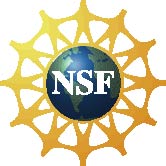Students
completing the curriculum will
. . .
SYSTEMS
1.
fabricate, test and evaluate the efficiency of an engineering system
(A1,A2,A3,A6)
2.
fabricate and test an engineering system where two physical parameters are
controlled (A1,A2,A3,A6)
3.
conceive, design, and fabricate a prototype utilizing a controller, sensors and
actuators (A1,A2,A3,A6)
ELECTROMECHANICAL
4.
utilize a programmable controller that interfaces with selected sensors and
actuators (A1,A2)
5.
implement functional circuits on a solderless breadboard for sensing and
control applications (A1,A2)
6.
utilize multimeters to troubleshoot circuits and to determine the power usage
of a device (A1,A2)
7.
describe the specifications, operating procedures, and underlying physics for
the hardware utilized (A1,A2)
FABRICATION
AND ACQUISITION
8.
fabricate parts using a wide range of conventional manufacturing processes (A2)
9.
design and fabricate an RTD sensor using microfabrication processes (A1,A2)
10.
locate materials, supplies and components in stores and from online suppliers
(A2)
11.
specify and purchase materials, supplies or components for projects (A2)
SOFTWARE
12.
utilize Excel, Mathcad and Solid Edge to assist in engineering analysis and
design (A1,A2)
13.
formulate and implement sequential computer programs for sensing and control
applications (A1,A2)
FUNDAMENTALS
14.
apply concepts of electricity and DC electric circuits (A1)
15.
apply basic statistics to quantify and model experimental data (A1)
16.
apply conservation of energy to engineering systems (A1)
17.
apply basic chemistry and electrochemistry to salt water mixtures (A1)
18.
apply conservation of mass to engineering systems (A1)
19.
apply least squares fitting to calibrate sensors (A1)
20.
apply concepts of statics to engineering systems (A1)
21.
apply engineering economics to solve time value of money problems (A1)
COMMUNICATION
22.
utilize the specified engineering problem solving approach when completing
assignments (A1,A4)
23.
properly present technical information in tables and graphs (A4)
24.
communicate the results of investigations and projects both orally and in
writing (A4)
BROADENING
ACTIVITES
25.
assess potential impacts of selected global and societal forces on our planet
and its inhabitants (A5,A6,A7)
26.
regularly attend professional society meetings and other student-led functions
(A7,A8,A9)
27.
work individually and collaboratively to complete course assignments (A4,A8)
28.
apply creative problem solving techniques for product design (A3)
29.
manage time and resources during the development of an innovative product (A10)
|
